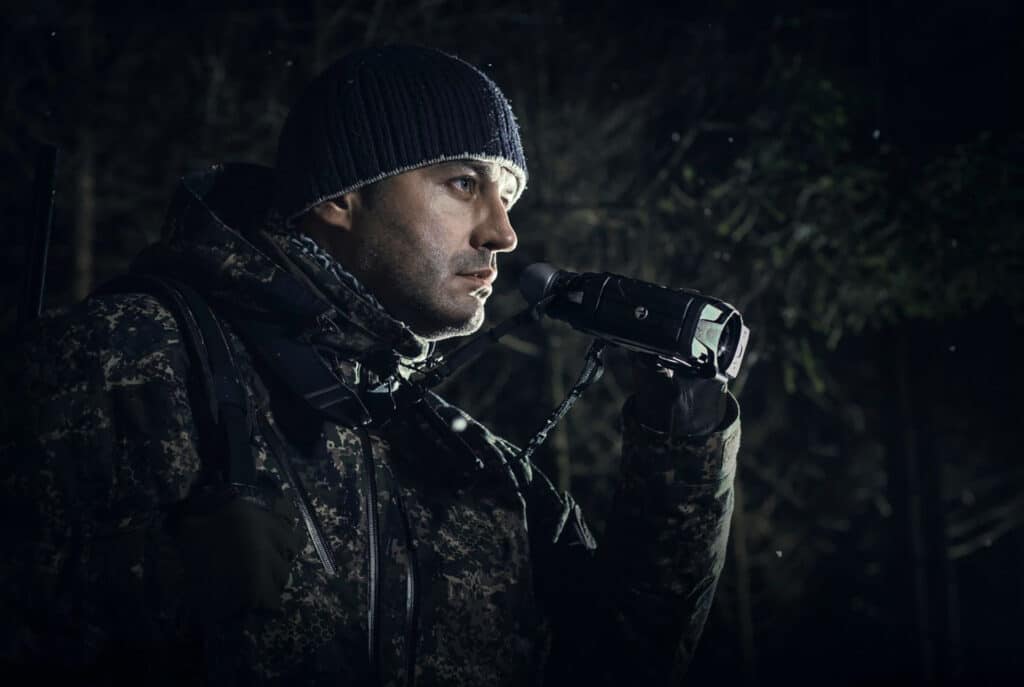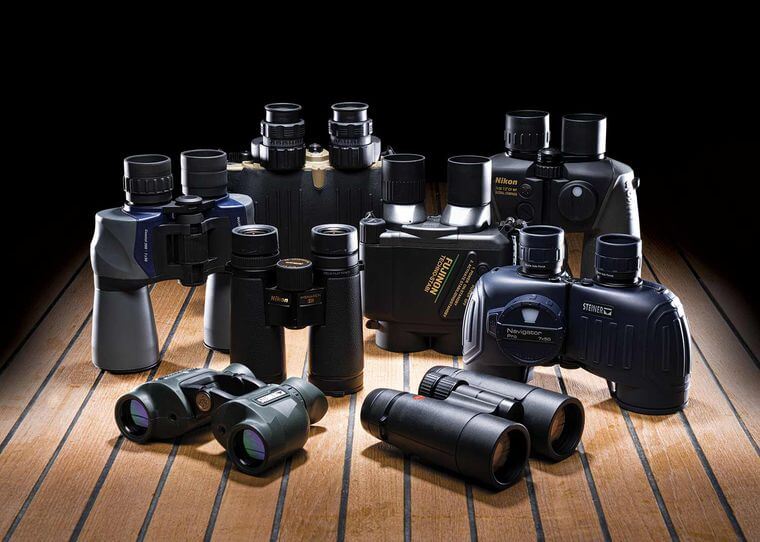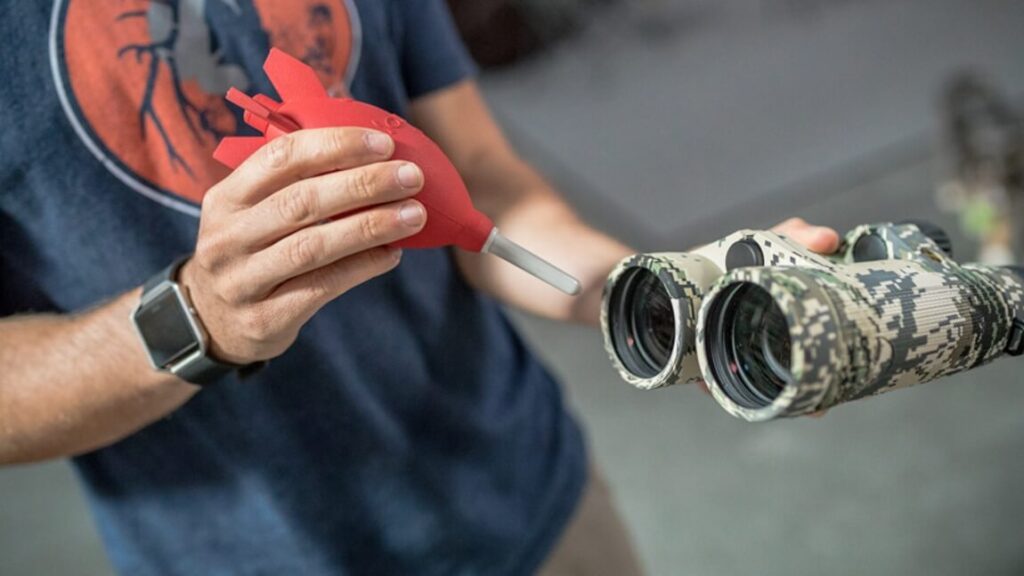

Just because the binoculars are top-rated doesn’t mean that you will enjoy using them. They may not even provide you the value you need. This is why your decision on which is the best image stabilized binoculars option shouldn’t be hasty. You need to pick by analyzing the features of the binoculars and what you get from them.
The first set of binoculars features that need to be looked at are magnification, objective lens diameter, and field of view. These will dictate how far and how much of the target you can see. Also, it will control the amount of light in the binoculars. Other features are the lens coating, prism system, and image stabilizing system. The image quality is heavily dependent on these three. Finally, to be sure you purchase the best image stabilized binoculars, you need to look at the physical components as well, including weight and durability. You can even check out extra binoculars features you come across, and that should form the basis of a shortlist of top options like the one below.
Other features: low-reflective exterior design, lead-free glass, doublet field-flattener lens
Canon, as a manufacturer, is well versed in optical equipment. Some might mention that the company is better known for creating quality cameras. This is alongside lens production as well. As such, they have high standards when it comes to image quality.
The company brings the same energy to the making of their binoculars lineup. This can be seen in the Canon 12×36 Image Stabilization III Binoculars. The tool seems built to cater to a large segment of the bird watching and hunting community.
With this Canon 12×36 Binoculars, you get 12x magnification without having to lose out on a stable image. This is made possible by the same image stabilization system that Canon uses in its EF lineup of camera lenses.
Also, you’ll note you get eye relief of 14mm, which can allow you to be a bit more comfortable while looking through this device. Another optical benefit is that you won’t need to deal with image degradation at the edges of your image. You can thank the doublet field-flattener lenses in your eyepiece for this.
Additionally, it is no secret that birds and animals scare off easily, especially when there are objects around them that they are unfamiliar with. For this reason, the manufacturer uses a low-reflective exterior design that ensures you are as inconspicuous as possible.
Porro prisms also work well to keep the design of the binoculars compact, all while ensuring the images are clear. Furthermore, they work to flip the image so you can see it upright. These are the same components that work in conjunction with gyro sensors to compensate for movement and keep the images steady.
Another component of the image stabilization system is a microcomputer in the body of the device. Lastly, the binoculars are compatible with Alkaline AA batteries and nickel-metal hydride rechargeable batteries as well.
Other features: waterproof, fog resistant, individual eyepiece focus, high twilight performance, rubber armoring
The Zeiss 20X60 S Image Stabilization Binoculars are an excellent but pricey option for those of you who want the best image stabilized binoculars for astronomy. In this case, the more the magnification, the better. Also, you will want superior image quality, which is something the Zeiss provides.
Like the Canon’s, the image stabilization isn’t always on. As such, it needs to be activated by pushing a button. This activates the mechanical image stabilization system of the device. After that, it will react accordingly to shakes caused by your hands and ensure what you are viewing remains steady.
The body of these binoculars is mostly metal. However, rubber coating is incorporated as well. You may also test out these binoculars in wet conditions as they are waterproof. The product as well employs countermeasures against fogging on the lens, which would reduce visibility.
Speaking of the lens, you have an objective diameter of 60mm, which is quite substantial. The light-gathering from this machine is thus superior. As for the price that you pay for these binoculars, you will be glad to know that you only need to part with your money once. The image stabilization in them works without needing a battery hence no recurring costs.
Another pleasing feature is the individual eyepiece focus. Our review team was also in awe of the field of view, which is quite large, even at 1000 yards away. Lastly, these binoculars are similar to the editor’s choice, given that they use a Porro prism system as well.
Other features: night vision, IR illuminator, laser rangefinder, weather-resistant, individual eyepiece focus
For less than $1000, owning the ATN BinoX 4K 4-16×65 Smart Day/Night Binocular is possible. Their bestselling feature is their ability to connect and interact with other smart devices. This is made possible by the integration of Ballistic integration exchange technology.
Aside from that, you benefit from the included rangefinder, which helps determine the distance to targets. Using this tool alongside your smartphone or tablet requires that you download the manufacturer’s laser ballistics app.
Also, keeping a record of your adventures using these binoculars as a 1080P video recorder is possible. If you want evidence of your escapades to show off to your friends, this is the way to do it. Even streaming via a Wi-Fi connection is possible.
Having individual eye focus and eye relief of up to 30mm could work for your benefit as well, where comfort and ease of use is concerned. Other than that, the field of view is impressive, and so is the image stabilization.
For some, the extra features are the most impressive of all. They include SD card support up to 64GB, microphone, gyroscope, Bluetooth, 3D accelerometer, and more.
Even while supporting all these features, the binoculars still manage to be lightweight and easy to carry. Being water-resistant adds to the pros as well.
Other features: shock-resistant, waterproof, submersible, 12-hour battery life, lifetime warranty
Another pair of binoculars that requires thousands of dollars to buy is the Fraser S250 Stabilized Binocular. There are claims that the s250 can reduce 98% of the image motion. This can be attributed to the advanced gyro-stabilization system.
Mentioned above is that the lenses are multi-coated for additional clarity and reduced reflections. Another thing that plays a significant role in getting crystal clear imagery is the objective lens with a diameter of 41mm.
The build of this optical machine is capable of taking a beating. After all, it is shock resistant and rugged in construction. As such, accidents such as dropping the binoculars while bird watching shouldn’t be a big deal.
These binoculars are additionally designed to take on wet conditions. They are waterproof to the point where they can be submerged in water without being damaged. However, when no one is holding them down, they will float on the surface due to the sealing they have undergone.
As well, there is a regulator built into the device so that the tool can incorporate external power. However, a lot of you will opt for internal power in the form of the CR123 Batteries. As such, you can squeeze out a maximum of 12 hours usage out of these.
Eye relief on these binoculars is impressive, and so is the limited lifetime warranty offered. The product is also unlikely to slip from the user’s hands during use as a result of the silicone covering.
Other features: waterproof, fogproof, phase coated, 5 degrees of stabilization, rubber-armored body, center focus
Another set of image-stabilized binoculars for birding you can purchase is the Fujinon Techno Stabi TS1440-14×40 Image Stabilization Binocular. As you contemplate this purchase, remember that reinforced fiberglass and durable plastic make up the construction of the binoculars.
Additionally, the grip is made of rubber, and you expect it to be firmer as a result. One thing that you may not see in the product’s description on Amazon is that it is nitrogen purged. This allows the Fujinon Techno Stabi TS1440-14×40 Image Stabilization Binocular to be waterproof and fogproof.
You get 5° of stabilization, and that applies both horizontally and vertically. Remember that a flotation wrap is included in the design of these binoculars, and that may be handy in some unique situations. Also provided is a hard carry case that will allow you to transport the binoculars with almost zero risk of damage.
The list of pros goes on. The EBC coating on the lenses, for instance, deserves mention. As a significant benefit of this, you get to see major improvements in image quality, even in low light settings.
Additionally, magnification is not something you forget about when reviewing binoculars. The 14x magnification may be sufficient for boating and even for use on planes.
Remember that this, too, incorporates automatic battery shutoff, and that may help save on battery life when you buy the 4 AA batteries needed for operation. Lastly, these are central focusing binoculars.
Other features: field flattener lens, comfortable grip, 6.6 ft min. focusing distance
Another entry to this list by Canon is the Canon Cameras US 14X32 IS Image Stabilizing Binocular. It uses a Porro prism system, just like the other Canon binoculars listed. The design on these binoculars is meant to ensure you are comfortable holding them for more extended periods.
Also, the weight isn’t too much; hence carrying the binoculars around all day won’t be problematic. If you encounter birds or animals that are relatively close, you can still view them using the binoculars since they allow for a small focusing distance.
You may as well be in awe of the color in the binoculars. The Super Spectra coating plays a big part in achieving this. It eliminates lens flare, reduces color bias, and lastly enhances contrast.
Additionally, the power IS mode helps with keeping images in the binoculars steady, but only if you press the button after adding the requisite batteries. Remember, with this binoculars purchase, you can even see objects that are 140m away.
Other features: center focus, 12-hour battery life, ±3° image stabilization, auto-off function
The Fujinon Techno-Stabi TS12x28 Image Stabilization Binocular gives the same level of magnification as the editor’s choice. However, the objective lens diameter is the smallest on the list. That being said, the manufacturer has found ways of ensuring this is enough.
A knob is visible in the middle of the binoculars, as shown in the image above. As such, it allows for center focusing. Additionally, the eye relief is one of the longest you can get out of most binoculars.
Buyers are given two Cr2 batteries, which can run for 12 hours. However, with the auto-off function, you will find that you can use the binoculars for even longer.
Lastly, you have ±3° of image stabilization.
The list above can provide some clarity on which image-stabilized binoculars to buy. However, it can also lead to further confusion owing to the jargon used to explain some features. The binoculars buying guide comes in to help you understand better the terminologies used. Also, you get to see which of the mentioned features are crucial for your birding, astronomy, or animal viewing experience. Finally, it can help narrow down the image-stabilized binoculars options to the best one for you.
Binoculars come with lenses that allow the image to seem much closer to the user. Nevertheless, those with IS come with some extra components, namely electronic sensors or a gyroscopic mechanism.
The function of the two components above is to detect motion in your hands and adjust the lenses accordingly. Of course, with these adjustments, there isn’t any blur in the image, and you can keep track of objects much more easily.
Lastly, there may also be some microprocessors in the binoculars to help with the lens adjustments.
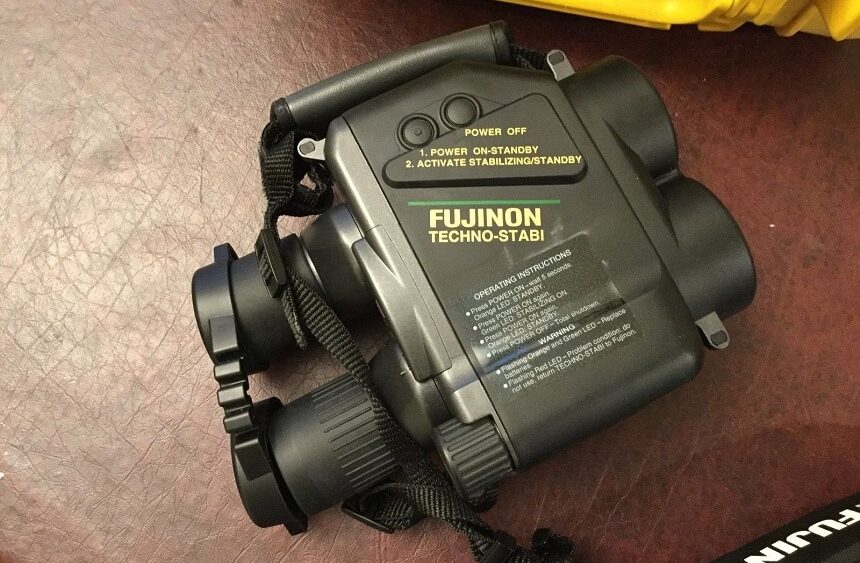
If you have previously used binoculars or even a camera with a zoom lens, you will notice that higher magnification tends to be detrimental to image stabilization. This is why you see people with cameras sometimes using tripod stands.
This can also be seen in telescopes. These stands aim to stabilize the camera or telescope hence maintaining the image. You may not have a stable stand that you can use with your binoculars.
This is where the image stabilization feature comes in. It allows the tool to compensate for the movement of your hands by moving the lenses as well. As such, it has a wide variety of uses. Some common ones include astronomy, hunting, bird watching, and more.
For people who have used image-stabilized binoculars before, a lot of what is mentioned above may not be new to you. For others, it may seem like a foreign language. The information below explain
s a lot of the terms used to describe features, so the words won’t seem as intimidating. Also, you won’t have as hard a time differentiating between essential and extra features.
The magnification is a measurement showing how many times an image is enlarged. If, for example, you see a bird looking almost 20 times larger than it would look with your naked eyes, then the magnification is 20x. As such, the more magnification you get with your IS binoculars, the further you can see.
Remember that for you to see the image, light has to come through the objective lens before reaching your eyes in the eyecup. The objective lens is the component that dictates the amount of light that can be collected by the binoculars.
Simply put, larger objective lenses collect more light. You should have that in mind as you look through the compact image-stabilized binoculars you see in a store or catalog.
You can either pick out a passive image stabilization system or an active one depending on where you intend to use the binoculars. The main difference in these two is whether they incorporate electronic sensors or a gyroscopic mechanism to maintain stable imagery.
Active IS, for instance, will change the position of your lens or the prism angle in response to movement information collected by the electronic sensors. These may not work so well on a boat, but if you are hiking, hunting or birding, they should prove sufficient.
Passive systems, on the other hand, are perfect for taking in the view while on a boat. You find that the internal gyroscope disconnects the prism system from the rest of the binoculars when activated. Consequently, the movement of the binoculars will have a very minimal effect on the system inside or on the image you are viewing.
The size of the area visible through a pair of binoculars is what is referred to as the field of view. Binoculars with a wider field of view enable you to see more. Also, there are two ways for the manufacturer to define the field of view. One is as an angle, while the other is the width measurement that can be seen at 1000 ft.
The field of view on the ATN BinoX 4K 4-16×65 Smart Day/Night Binocular, for example, is 220 ft at 1000 yds or 6 degrees.
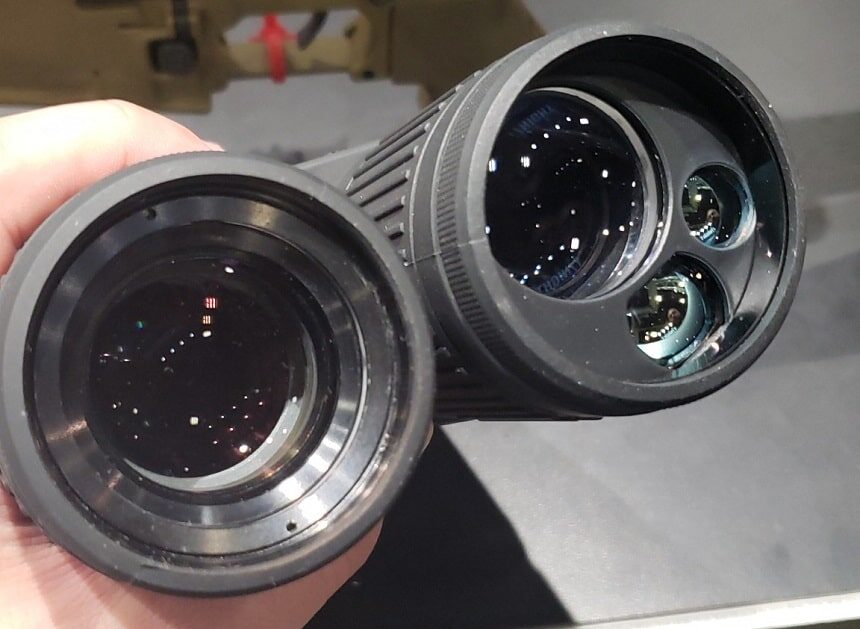
Whatever the intended use, you are bound to come across two main types of prism systems in the search for the ideal binoculars. These are the Porro and roof prisms.
According to experts in binoculars-making, Porro prisms are easier to produce. They have an optical path in the shape of a Z, and they lose no light since minor and major components in the optical path are all reflective. The Canon 12×36 Image Stabilization III Binoculars above uses a Porro prism system. Noteworthy is that they are generally larger than their counterparts.
It should be noted that there are subcategories under Porro prisms, namely the BAK4, BK7, and Sk15 options. These subcategories describe the type of glass used in construction. Barium Crown glass or BAK4 is widely considered the best. Minimal light loss and a high refractive index are some of the benefits.
Bk7 is known to be of lower quality than BAK4. However, often there is little to complain about when it comes to light transmission. The number of imperfections may also be negligible to most people. The more commonly used out of these two is the BK7 prism system.
SK15, on the other hand, is a mix of the two mentioned above. That being said, the refractive index is superior to that of the BAK4 and BK7. Light dispersion for this system falls between the BK7 and BAK4.
The competition for Porro is found in roof prism systems, as shown by the Fujinon Techno Stabi TS1440-14×40 Image Stabilization Binocular. These incorporate a surface that is not entirely reflective in the construction of the optical path. However, manufacturers make sure that a small portion of the surface is highly reflective to counter the loss of light.
Also, the second prism in such a device is perfectly crafted to eliminate image flare and double images. The technology used to craft the second prism is also highly advanced, owing to the degree of perfection required. Lastly, if you see binoculars with a compact or slim body, they likely use a roof prism system.
Lens coating is often used to achieve better quality images. As such, you have a few options here, including coated, fully coated, multi-coated, and fully multi-coated. The term coated shouldn’t impress you that much. Only one optical surface needs to be coated for a product to be classified as such.
Where all the glass surfaces in the binoculars have a coating layer, it is considered fully coated. Additionally, multi-coating is where at least one major optical surface has multiple layers of coating. Of course, the intended result is sharper images as well.
Lastly, fully multi-coated lenses have all their glass surfaces covered with two or more layers of coating. Ideally, you would get a fully multi-coated option since it gives you the best in image quality.
For some of you, especially birders and astronomers, being able to see the image as clearly as possible is high on your priorities list. As such, you may want to confirm that you are getting the best image quality before purchase. You may contact the manufacturer directly. However, in some cases, it is enough to read a few negative reviews about a product. If the image quality is mentioned there, you can steer clear of that binoculars offering.
If the plan is to use the binoculars for long periods, you are going to want the most extended eye relief you can find. This is because it will provide you with more positioning freedom; hence you will be more comfortable as you use them.
Remember that eye relief is a measurement of how far away your eyes can be from the lenses in the eyecup while still allowing you to see the whole image.
One constant in whatever purchase you make is the need for it to be long-lasting and impervious to damage. This is the reason you look at the construction materials, even in the case of Image stabilized binoculars. Metal construction, when protected against rust, is the most durable hence why they are preferred.
Your binoculars will undoubtedly come into contact with a little rain, water, fog, and dust while you are on your expeditions. Noteworthy is that if they aren’t protected against these elements, it may be the last time you use them. As such, ensure you buy binoculars with at least some form of weather protection.
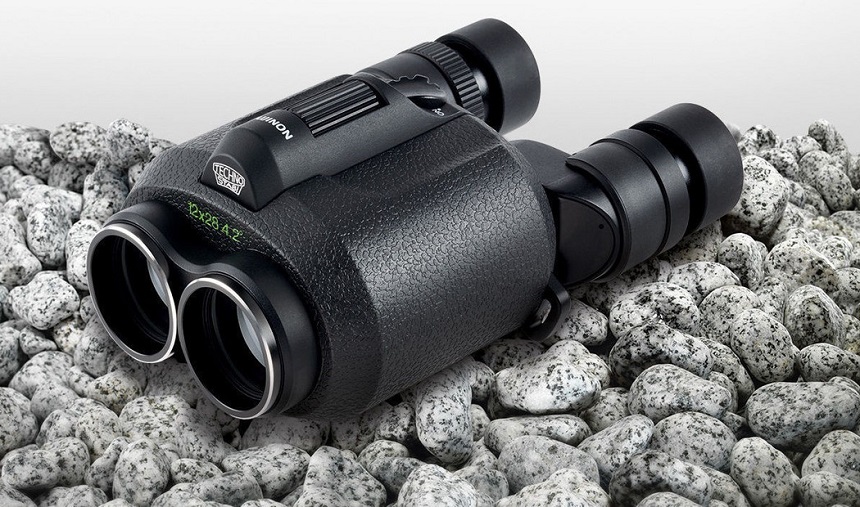
Carrying the Fujinon Techno-Stabi TS12x28 Image Stabilization Binocular is definitely easier than bringing the Fujinon Techno Stabi TS1440-14×40 Image Stabilization Binocular on your birding trip. The latter is more than 3 lbs heavier than the former, and that weight is going to make it less comfortable to carry.
However, it might be worth the extra features and benefits you get as a result. Nevertheless, you need to decide whether the extra weight is worth carrying around.
Eyecups will affect your overall experience with the binoculars. As such, ensure they are adjustable, the material is soft, and that they won’t be problematic to your overall user experience.
If you’d like more value out of your binoculars, check out extra features. Remember that they are not always available and where they are, they may add to the cost. Examples include Bluetooth and Wi-Fi connectivity, as seen in the ATN BinoX 4K 4-16×65 Smart Day/Night Binocular.
However, picking the 10×50 will make it necessary for your eyes to be closer to the lens. For comfort purposes, this is less than ideal. As such, the better option varies according to individual needs.
Our best pick is the Canon 12×36 Image Stabilization III Binoculars. It is a pair of binoculars that can be used in a wide variety of scenarios. Among them are birding and hunting. Eye relief alongside the active image stabilization system are impressive features as well. Lastly, this pair is quite affordable.
Our second favorite is the Zeiss 20X60 S Image Stabilization Binoculars. Owing to the magnification, this tool looks like it would be perfect for astronomy. We have already mentioned the importance of a large objective lens, and the Zeiss doesn’t disappoint here either.
For the person looking to rewatch their activities in the outdoors in HD video, the ATN BinoX 4K 4-16×65 Smart Day/Night Binocular is the only sane choice. This is because it is the only one listed with video recording capabilities. Its compatibility with smart devices also works well for the buyer’s benefit.
Whatever activity you want image stabilized binoculars for, we are sure the perfect fit can be found in the list above.

